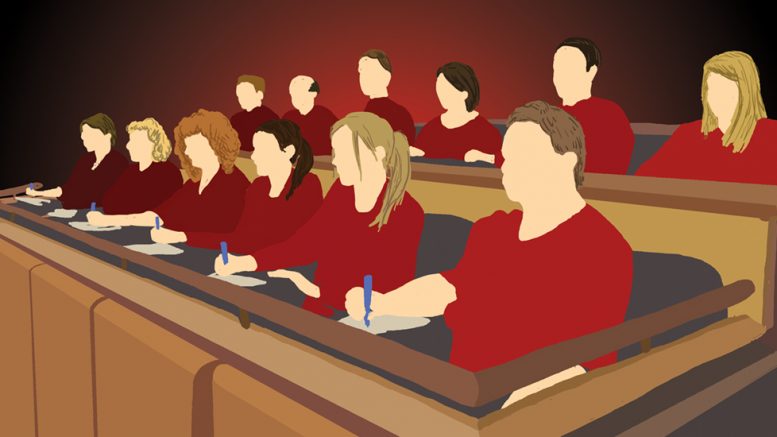If even the appearance of bias is cause for concern, Canada’s justice system is in a poor state.
Last week, a jury acquitted farmer Gerald Stanley of second-degree murder in the 2016 killing of 22-year-old Red Pheasant First Nation resident Colten Boushie.
Stanley is white. Boushie was Cree. And there was no visible Indigenous representation on the jury of seven women and five men. The optics are not good.
Before the verdict was even returned, Indigenous advocates and legal experts were already arguing that the case is just a further example among many that Canadian juries need to be made more diverse.
During selection in late January, a number of potential Indigenous jurors were rejected outright through the defence’s use of peremptory challenges – where no reasons for dismissal need be submitted.
The 1991 Manitoba Aboriginal Justice Inquiry – which determined this province’s system to be a “glaring example of systemic discrimination” – called for such challenges to be eliminated.
The selection process alone moved Boushie’s uncle to lament that “the deck is stacked against us.”
The facts of this case are tragic. The court heard Boushie was sitting in an SUV on Stanley’s property when he was shot in the back of the head in what the defence called a “freak accident.”
Stanley testified that he thought an ATV was being stolen from his property and, after firing warning shots, he reached into the SUV to take away the keys when his gun “just went off.”
The driver of the SUV said a group of four people had been drinking throughout the day and admitted they attempted to break into a truck on a neighbouring farm. The driver said they went to Stanley’s farm looking for help with a flat tire.
The stories of the witnesses in the SUV were challenged by the defence and they admitted to lying to investigators about the attempted theft, going on to say they had changed their stories before testifying.
None of this is cause for execution. The sentence for attempted theft is not death.
But the case shines a light on the ongoing failures of the Canadian justice system that, at minimum, gives the impression that justice is unfairly distributed. At worst, it illuminates a two-tiered system where Indigenous people are not afforded the rights of all Canadians to be represented by a jury of their peers.
The Supreme Court weighed in in 2015 when it upheld a manslaughter conviction of a Grassy Narrows, Ont., man who was tried before a jury that did not include Indigenous representation.
Overturning an earlier Ontario Court of Appeal decision that threw out the initial conviction, the upper court determined by a 5-2 margin that Ontario made reasonable efforts to include Indigenous populations on its jury selection rolls. Hardly a high bar to meet.
The dissenting opinion – written by Justice Thomas Cromwell and supported by Chief Justice Beverley McLachlin – argued that forcing a defendant to select a jury from a roll that excluded a significant part of his community was “an affront to the administration of justice and undermines public confidence in the fairness of the criminal process.”
An earlier report from Ontario called it an “undeniable fact” that the problems of improving Indigenous representation on juries are linked to the “justice system’s treatment of members of First Nations generally.”
At the same time Indigenous people are underrepresented on juries, the proportion of Indigenous adults in custody is nine times higher than their representation in the population at large. Indigenous adults, especially women, are also overrepresented as victims of crime.
Less than 24 hours after the Stanley verdict was read out in court, thousands of Canadians – including some 700 in Winnipeg – participated in numerous rallies across the country calling for “Justice for Colten.” The Assembly of Manitoba Chiefs has also joined a call for an inquiry into the trial.
Prime Minister Justin Trudeau, along with Indigenous services minster Jane Philpott and justice minister Jody Wilson-Raybould, took the extraordinary measure of taking to Twitter to comment on the verdict, with the latter stating that “as a country we can and must do better.”
It has been more than two years since the Truth and Reconciliation Commission released its 95 calls to action toward rebuilding the relationship between Canada and its Indigenous population.
If this ongoing project is to be taken seriously, it will take more than the appearance of regret from government. And if justice is to even appear to be served, Indigenous people need to be invited into the jury box.


